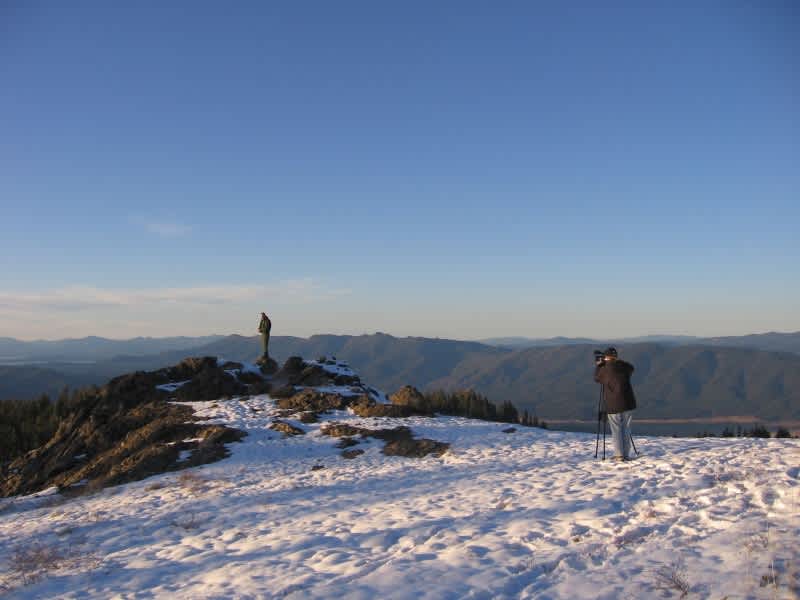Producing Your Own Outdoor TV Show: Releases, Permits, and Insurance
James Swan 03.27.14

In an earlier column I offered advice for producing your own outdoor TV shows or documentaries. It covered funding, production techniques, and how to pitch your ideas and shows. If you didn’t read that one, I recommend doing it as a set up for this column, which covers three more pragmatic areas about paperwork that could make or break your show—and maybe your bank account.
Permissions for people who appear on camera
For purely recreational stills or video that you have no intention to use for financial gain, it is generally accepted that you can photograph people (or otherwise include them in your shots) without explicit permission. But in any other case, you should receive explicit permission to film every person that appears on-camera and is recognizable (they don’t have to say anything), if possible. If that isn’t possible, then with the camera running you can ask for their permission. If they agree on-camera that also protects you. There are a number of permission release forms that can be found on the internet, and you can buy pads with permission slips at some camera shops that cater to professional videographers.
Getting permission from groups of people can be difficult, especially if you’re shooting live action. For example, if you’re videoing a group of people walking toward you or in a political rally, you could hold up a sign saying that you are taking video for a documentary and if they do not want their face to be seen, then look away from the camera.
Permission for locations
For land that’s privately owned, you need to have the owner’s permission in writing to protect you from liability should any damage occur. This is also true for commercial uses of public property, whether said property is owned by a local city, a state, a federal agency, or an Indian tribe. There will be a fee, forms to sign, and a certificate of insurance that must be shown. If your work is not for commercial purposes, or for a news show or article, then you are generally safe.
State lands are generally the cheapest. For example, in New Mexico permits to film on state lands can run as little as $15 a day.
City film permits vary. Some cities will waive permit fees on city property, because filming brings in revenue to the local community. Some, however, may tack on the requirement that you not only get a permit and provide insurance, but they’ll require you to hire local police for security.
To get up-to-date information on film permits for city and/or state lands, check with the appropriate film commission for that area.
Right now there’s a real controversy about the permit system for filming on federal lands, for several reasons. One of the main points of contention surrounds just what permits are needed for.
For example, according to the US Forest Service:
National Forest visitors and professional or amateur photographers do not need a permit to take still photographs unless the still photography will:
- Use models, sets or props that are not part of the site’s natural or cultural resource or administrative facilities.
- Take place where members of the public are not generally allowed. An example would be an area closed to the public to protect winter range for wildlife.
- Take place at a location where additional administrative costs are likely. An example would be sites that are so popular with photographers the Forest Service is required to regulate use.
The controversy comes when motion pictures are involved. Recreational photography is fine, but if it’s for commercial purposes, then USDA says that “A special use permit is required for all commercial filming activities on National Forest System lands. A special use permit is not required for broadcasting breaking news.”
Each area sets its own rates and requirements and they can be steep. Some may charge upwards of $500 a day and require rangers to be assigned to the location shoot, which can cost an additional several hundred dollars a day.
The second is the time it takes to get permission. Some agencies may require that you file an application for a permit 10 days or more before you want to shoot on their land.
The third concern relates to requirements for insurance. You should have a general liability policy, and many states and cities will require this as well. Again, check with the location management agency. A quick check of insurance online shows anywhere between $150 to $500 or more for liability insurance depending on the time, and what you’re doing. Sometimes you can get short-term permits, otherwise, you may get one for several months or the full year.
For some areas, the total cost to shoot a one-day video for broadcast can run up to $1,000, which incidentally can be the same amount as the fine for not following regulations.
The US National Park Service in Washington told me that there are some new regulations in process, but they aren’t posted yet.
Three additional sources of information along the lines of what I discussed in this column are Michael Wiese Productions, Dov S-S Simens‘ From Reel to Deal, and The Movie Business by Kelly Charles Crabb.
One final suggestion: if possible, you should hire an attorney to handle all questions and concerns relating to these matters.

